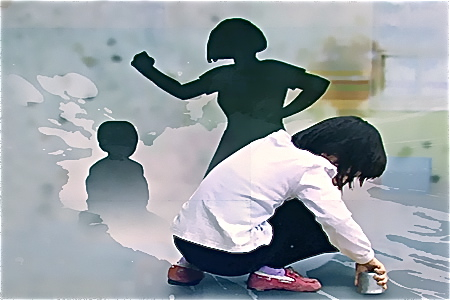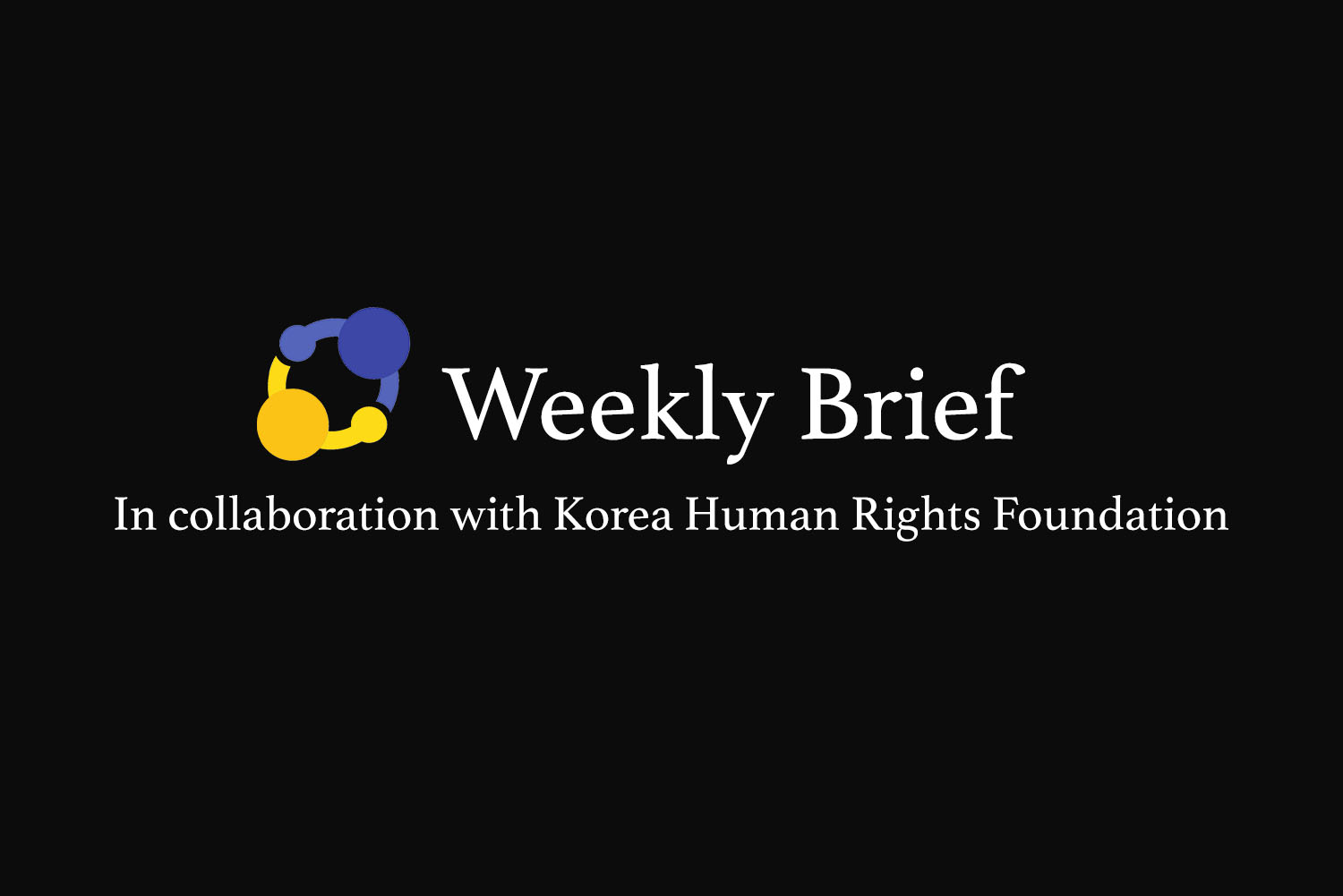
Children of Misfortune: Child Abuse in South Korea
Over dinner one evening, a South Korean journalist friend posed what seemed like a riddle: “Let’s say there is a high school reunion. One classmate is a Samsung executive with a high-school graduate for a son. Another is a security guard whose son attends Seoul National University. Who do you think will be the envy of everyone at the party?”
If you say the Samsung exec as I did, you may have some way to go before understanding how South Korea works.
I am struck by how often South Koreans of a certain age refer to childrearing as jasik nongsa, literally “child farming.” The parent is farmer and the child his crop. Much as a farmer who fails to grow perfect produce is no good farmer, a parent who cannot raise a successful child is no good parent. And when parenthood is central to one’s identity — every ‘normal’ South Korean should marry and have children — a child who doesn’t meet the typical standard of success is not just doing himself disservice; he brings his parents down, too.
One could be a Samsung executive or even president of the Republic of Korea, but without children of distinction there is bound to be gossip and sniping behind the back.
South Korea is naturally famous for education fervor and parents who do anything and everything in their power for children’s success. Borrow money to pay for private education on the side. Buy or rent an apartment one cannot afford just to be in a better school district. Dictate every minute and hour of the child’s schedule so he grows up to be an academic superstar.
The question is when this parental investment turns into bona fide ownership. I have seen enough South Korean parents act like they own their children. And when a parent lets his sense of ownership go overboard, disturbing consequences can ensue.
Last week, South Korea was shocked by the news from the city of Bucheon, west of Seoul, about a father who murdered his seven-year-old son three years ago. He flushed some parts of the boy’s corpse down the toilet and disposed of others as garbage. Remainders were kept in pieces in the family’s freezer until now.
The gruesome discovery was made possible by an equally terrible revelation last December: A girl, aged 11, escaped a second-floor apartment in Incheon by climbing down the gas pipe. She had been held captive by her gaming addict father and his girlfriend for two years, suffering starvation and frequent beatings. When the girl was found and reported to the police by a nearby store owner, she weighed only 16 kilograms (35 pounds) — the average weight of a four-year-old.
Once the news of the abused girl made headlines the government began investigating the welfare of all primary school-aged children who had been absent from class for extensive periods. In its course the Bucheon case came to light. The father, identified only by his surname, Choe, had been brutalizing his son for two years and finally ended the boy’s life during a two-hour beating in November 2012. The mother, too, had been complicit in the cover-up of the crime. It seems she cared only for her daughter, and not her son who exhibited signs of behavioral disorder.
As of January 18, the government was still to ascertain the whereabouts of seven other missing children.
Although these two cases are extreme, child abuse is a serious yet underestimated problem in South Korea. Between 2004 and 2014 the number of confirmed child abuse cases grew exponentially, jumping nearly threefold from 3,891 to 10,024 according to the Ministry of Public Health and Welfare.
But these are only the verified cases; the numbers rise much higher if all reported cases are counted. For example, one estimate puts the number of reported cases of child abuse in 2013 as 13,076. The government, however, counted only half that as confirmed — 6,796 to be exact.
And even reported cases might not give a complete picture because child abuse has long been considered a family matter in South Korea. Underreporting is routine.
Until very recently the government’s response to child abuse has been woefully inadequate. To go by data from 2010, it is remarkable to see that out of 5,657 confirmed cases of child abuse only 290 were referred for trial. Court ruling was issued in mere 160 cases.
In the case of the seven-year-old boy killed in Bucheon, two teachers visited his home twice but could not meet him. Even though primary and middle school education is compulsory in South Korea, the school had no authority to ensure the boy’s attendance and referred the case to the local government office. Municipal officials, however, did not act at all.

For the first time the government legislated a special law in January 2014 specifically aimed at punishing child abusers. It came in response to three separate cases of child abuse between 2008 and 2013 in the southeastern industrial city of Ulsan and North Gyeongsang Province adjacent to it. In each case the child suffered prolonged abuse before dying in the hands of his or her stepmother.
Worse, in one of these cases, the eight-year-old victim’s parents tried to pin the beating and murder on their other child — the victim’s 12-year-old sister who first made a false confession under parental pressure before the truth emerged.
The regularity of high-profile child abuse cases in South Korea casts doubt on the government’s effort at prevention. Just one month after the special law was enacted, in October 2014, a woman, again in Ulsan, killed her two-year-old adopted daughter. The cause was brain hemorrhage from being beaten with a metal beam.
And now the tragedies in Seoul’s two western satellite cities of Bucheon and Incheon.
I have said elsewhere that many South Korean parents’ approach to childrearing amounts to abuse. It was almost a century ago that criticisms were first raised against the conventional Korean attitude toward children: “As long as parents live, children have no freedom and are treated like slaves or livestock not unlike subjects of a feudal lord.” We do not think much about the South Korean holiday that falls each year on May 5 — Children’s Day — but as Dafna Zur, my friend and specialist in South Korean children’s literature, notes, the very concept of “children” behind the day — eorini in Korean — was radical in 1920 when Japanese-educated reformer Bang Jeong-hwan first introduced it to Koreans. The idea of children as innocent beings deserving of protection and nurture was novel, and went against the existing idea of offspring solely as a source of economic and social benefit to the family unit.
Although Children’s Day continues to be celebrated, there are times I wonder if much has changed. When I told one parent during my hagwon teaching stint years ago, “I want your son to have fun and learn something in the process,” she replied without so much as blinking, “I don’t care how much work you make him do or how little fun he has. I just want him to come home with As.” I have had students who say they never want to see their mother or wish they could spend more time with their fathers who never come home because of work and golf. I still overhear mothers huddled over beverages and brochures at local coffee shops between the hours of 2 and 4 pm discussing how best to commit children to schedules going beyond 2018.
Of course, forcing children to study is vastly different from beating them to death. But the two behaviors have in common the idea of children as property, not individuals in charge of their own destinies. Overbearing South Korean parents with whom I have tried to reason on behalf of students have a stock answer: “It’s my child so don’t interfere.” The father who cut up his own son’s body protests, “But I was beaten, too, as a child.” He says he was merely exercising his parental prerogative, punishing a wayward boy.
Pressure, discipline and abuse of children share spots on the spectrum of parental attitude toward children, justified with identical words: “in the best interest of the child.” Parents supposedly know best, but if anything the child abuse crisis indicates that this conventional wisdom must be contested. The special law from 2014 broke grounds in recognizing that childrearing cannot always be seen as a matter of the private sphere beyond the government’s reach. But we must go much further than that.
Laws can help but the next obvious step toward reducing child abuse in South Korea is to question the psychology of South Korean parenthood. In 2014, abusers in 77.2 percent of confirmed child abuse cases were biological parents. As long as parents are permitted to view themselves as masters of their children’s universe and exercise control bordering on psychological abuse, child abuse of more extreme kinds will not abate.
To return to the story that began this essay, I wanted to ask which child was happier: the Samsung executive’s child who did not go on to university or the security guard’s Seoul National University-attending child. Perhaps both. Perhaps neither. We will never know because the story was never about happiness of children, only that of parents. Children’s wellbeing is of no importance when parental pride is at stake.
In writing this essay I greatly benefited from an article by Prof. Emeritus Heo Nam-sun, titled “Significance of the Special Law Concerning Punishment of Child Abuse and Future Tasks in Korea.” It is available courtesy of ChildFund Korea at this link [Korean].

